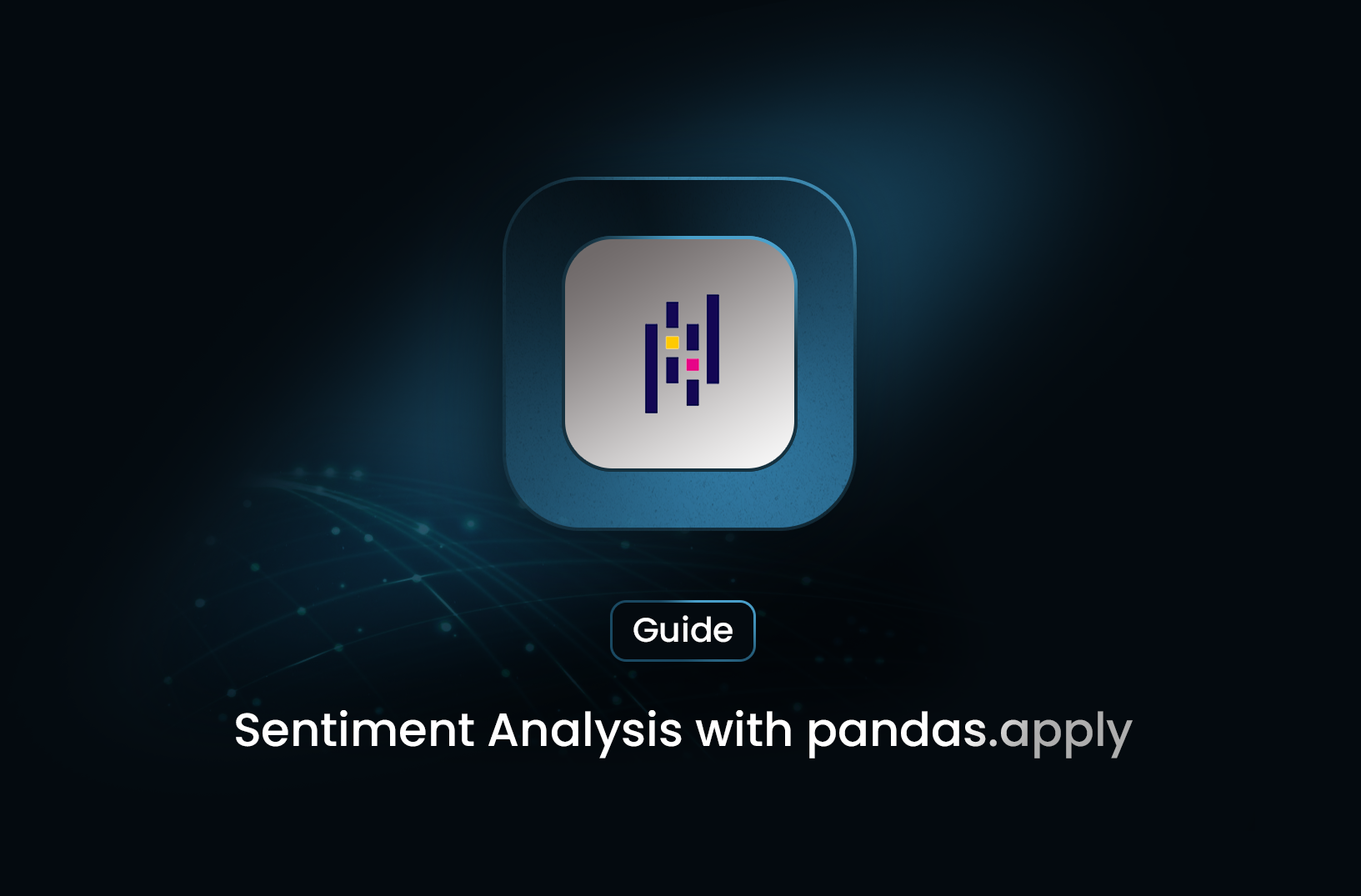
Sentiment Analysis with pandas.apply: A Practical Use Case
GuideLearn how to use pandas.apply for sentiment analysis on customer reviews. This guide walks you through classifying reviews as Positive, Negative, or Neutral using Python and TextBlob. Perfect for data enthusiasts and NLP beginners!
This guide demonstrates how to use pandas.apply for sentiment analysis on customer reviews. We'll classify reviews as Positive, Negative, or Neutral using a custom function.
Problem Statement
You have a dataset of customer reviews and want to classify each review based on its sentiment using a polarity score.
Dataset Example
import pandas as pd
# Sample DataFrame
data = {'Review': [
"The product is fantastic, I love it!",
"Terrible experience, I will not buy again.",
"It's okay, but could be better."
]}
df = pd.DataFrame(data)
# Display the DataFrame
print(df)
Output:
Review
0 The product is fantastic, I love it!
1 Terrible experience, I will not buy again.
2 It's okay, but could be better.
Solution: Sentiment Classification with pandas.apply
Step 1: Install the Required Library
For this use case, we'll use the TextBlob library for sentiment analysis. Install it using pip if not already installed:
pip install textblob
Step 2: Define the Sentiment Analysis Function
from textblob import TextBlob
# Function to classify sentiment
def classify_sentiment(review):
analysis = TextBlob(review)
if analysis.sentiment.polarity > 0.2:
return "Positive"
elif analysis.sentiment.polarity < -0.2:
return "Negative"
else:
return "Neutral"
Step 3: Apply the Function to the DataFrame
Use the pandas.apply method to classify each review based on its sentiment.
# Apply sentiment classification to the 'Review' column
df['Sentiment'] = df['Review'].apply(classify_sentiment)
# Display the updated DataFrame
print(df)
Sentiment Analysis
| Review | Sentiment |
|---|---|
| The product is fantastic, I love it! | Positive |
| Terrible experience, I will not buy again. | Negative |
| It's okay, but could be better. | Neutral |
Explanation of the Workflow
- Custom Function: The
classify_sentimentfunction uses TextBlob to calculate the sentiment polarity:
- Polarity > 0.2: Positive sentiment
- Polarity < -0.2: Negative sentiment
- Otherwise: Neutral sentiment
- Apply Function: The
applymethod applies theclassify_sentimentfunction to each review in theReviewcolumn, efficiently processing each row.
Why Use pandas.apply?
- Flexibility: Allows custom logic for specific data transformations.
- Scalability: Handles large datasets effectively for row- or column-wise operations.
- Ease of Use: Simplifies applying NLP models or custom functions.
Conclusion
Using pandas.apply is a simple and flexible way to perform sentiment analysis and other custom row- or column-based transformations. While it is versatile, keep in mind that vectorized alternatives may offer better performance in some cases. For sentiment analysis, TextBlob is an excellent choice for basic tasks, but for more advanced use cases, libraries like NLTK or spaCy might be more suitable.
For further learning, refer to the pandas documentation and the TextBlob documentation.
Find more insights here

Web Scraping with Go: A Developer’s Guide
Learn how to build web scrapers using Go (Golang). This guide covers net/http, goquery, Colly, concu...

Web Scraping with Node.js: A Practical Developer Guide
Learn how to scrape websites using Node.js with practical examples. This guide covers Axios, Cheerio...

Scraping Tool: What It Is, How It Works, and How to Choose the Right One
Learn what a scraping tool is, how web scraping tools work, common use cases, and how to choose the...
